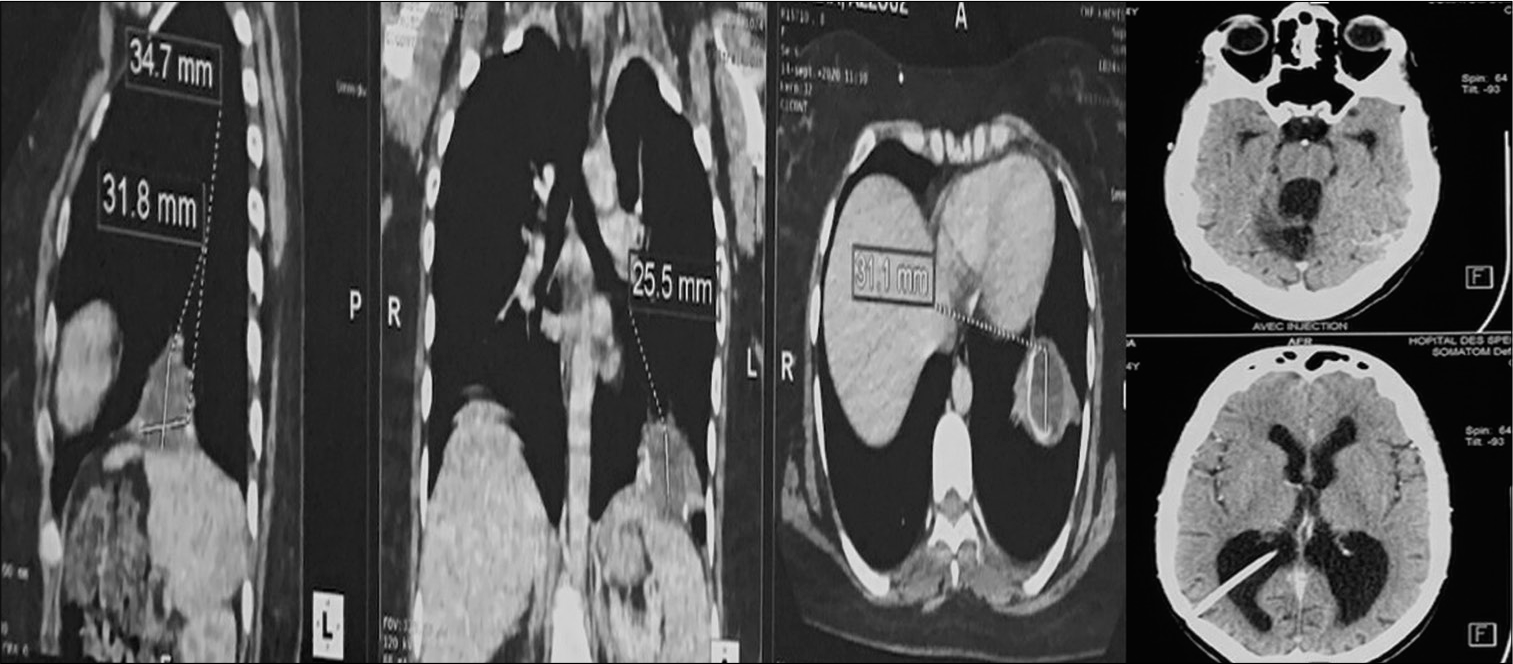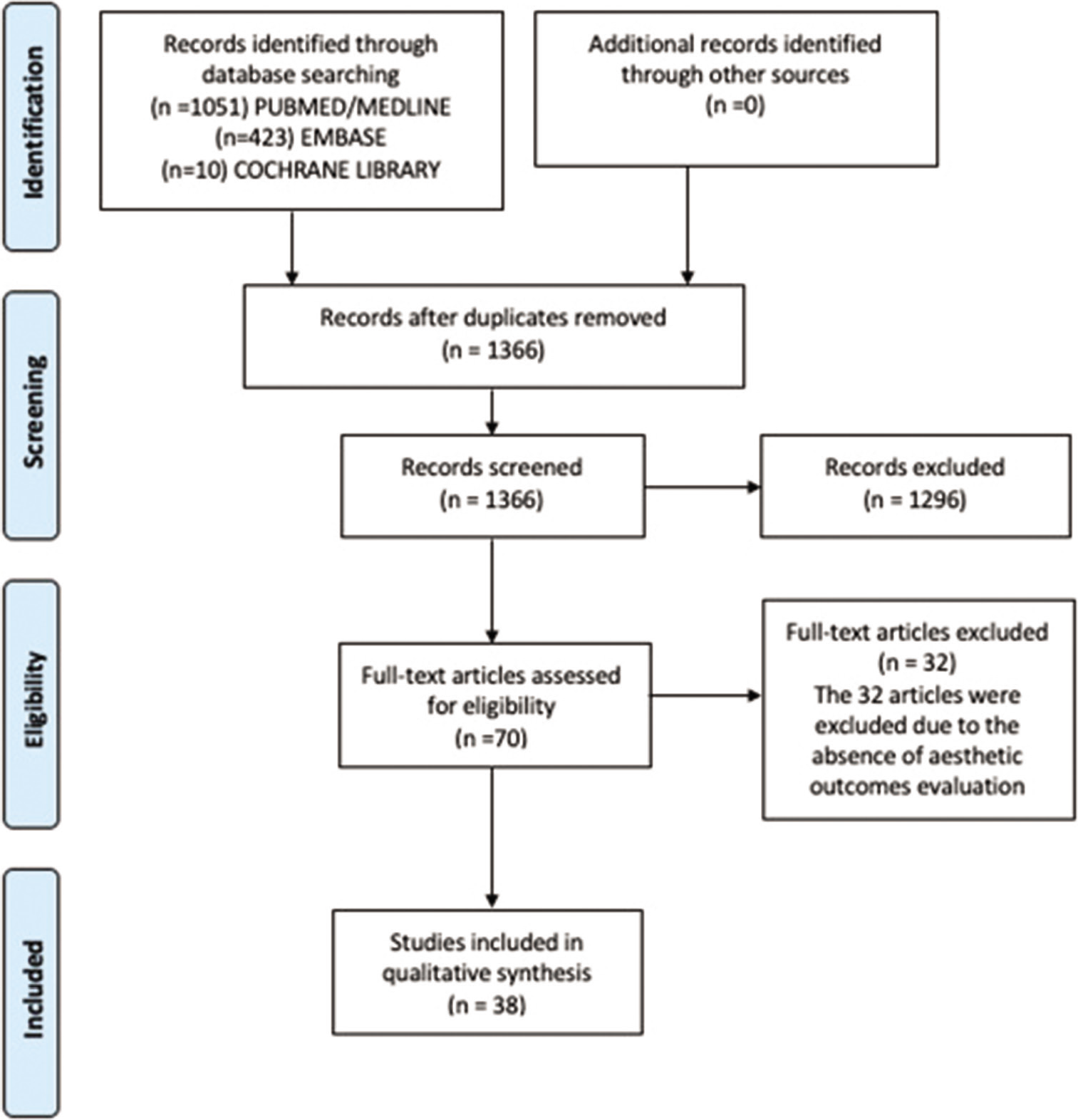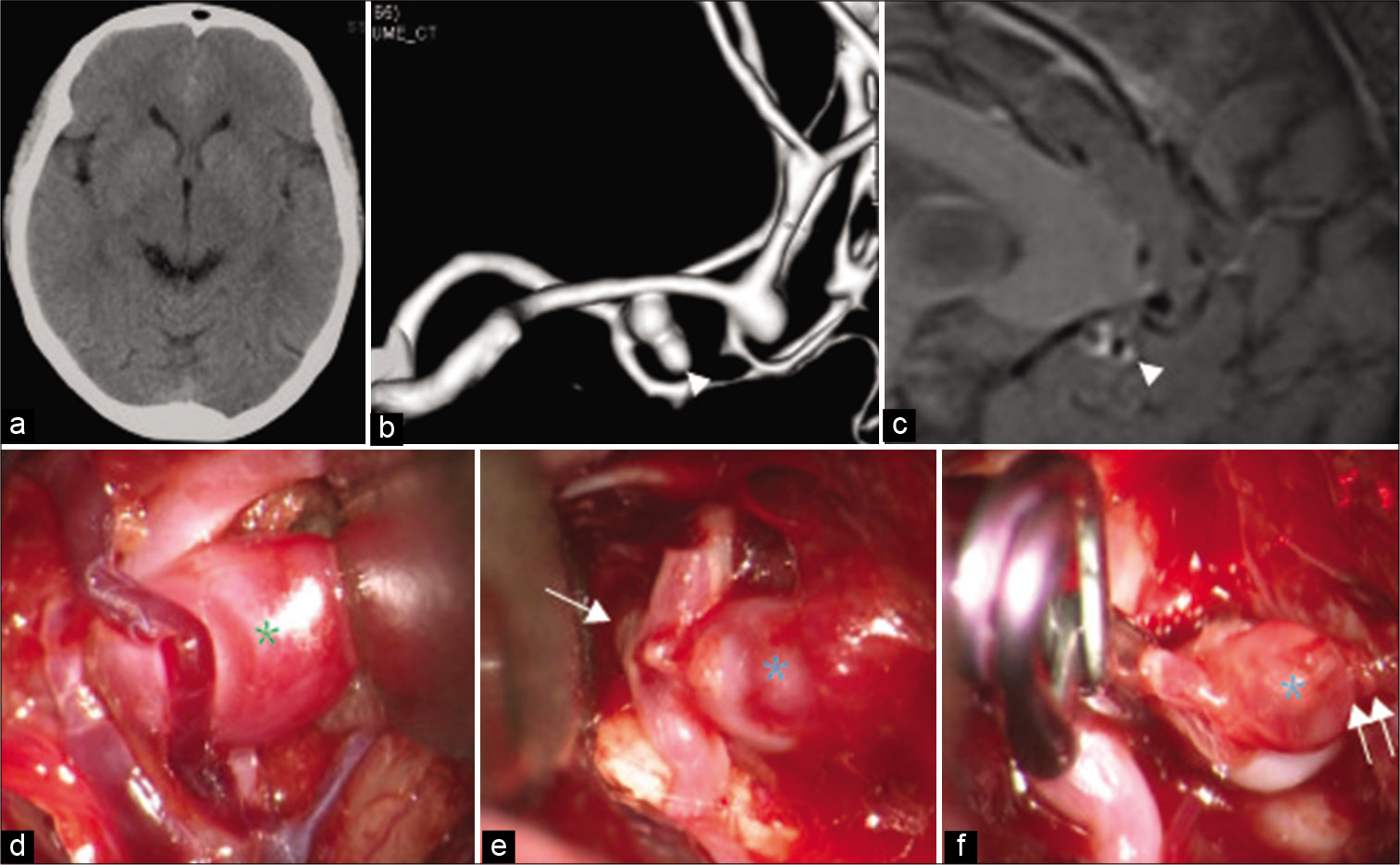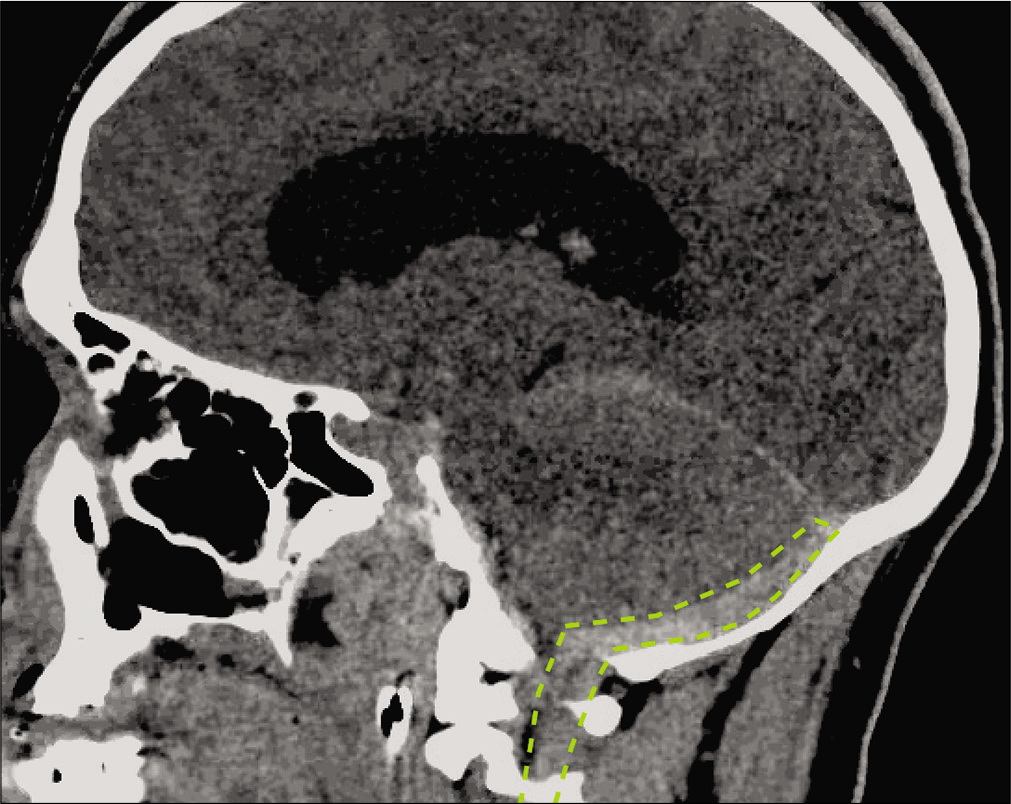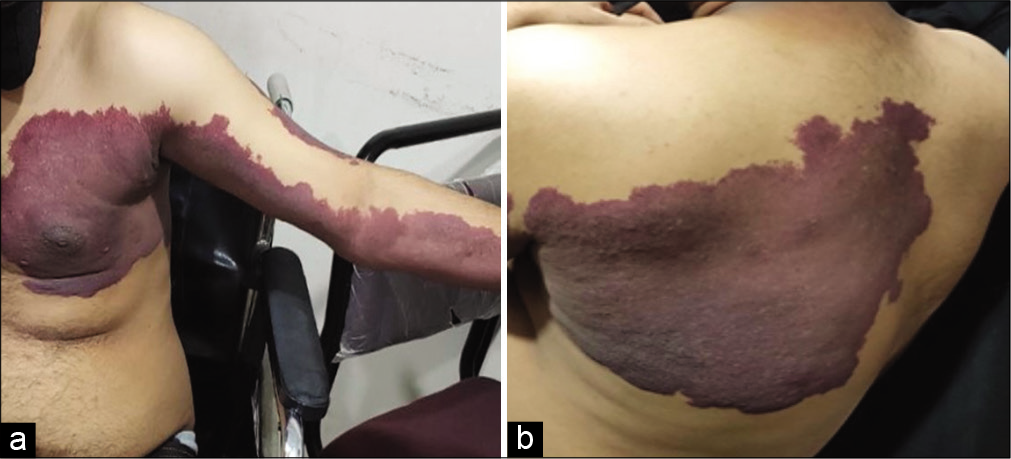Thoracic abscess due to unusual migration of a ventriculoperitoneal shunt and literature review
Date of publication: 13-Sep-2021
Background: Thoracic complications of ventriculoperitoneal (VP) cerebrospinal fluid shunting are rare and the diagnosis is difficult without neurological impairment.
Aggressively recurring cervical intramedullary anaplastic astrocytoma in a pregnant patient
Date of publication: 13-Sep-2021
Background: Many patients with spinal juvenile pilocytic astrocytoma can experience prolonged remission after resection. However, some reports suggest that pregnancy may be associated with progression.
Primary peripheral T-cell central nervous system lymphoma
Date of publication: 13-Sep-2021
Background: Primary peripheral T-cell central nervous system lymphoma (PCNSL) is a rare, aggressive tumor that arises in the craniospinal axis and has an increased risk in individuals who are immunocompromised. This lesion often mimics other benign and malignant processes on radiographic imaging, leading to misdiagnosis and delays in treatment. We present a case of a patient with a history of Sjögren’s syndrome and progressive neurologic symptoms who underwent craniotomy for diagnosis.
Using smartphone-based accelerometers to gauge postoperative outcomes in patients with NPH: Implications for ambulatory monitoring
Date of publication: 13-Sep-2021
Background: The surgical treatment of normal pressure hydrocephalus (NPH) with shunting remains controversial due to the difficulty in distinguishing such pathology from other neurological conditions that can present similarly. Thus, patients with suspected NPH should be carefully selected for surgical intervention. Historically, clinical improvement has been measured by the use of functional grades, alleviation of symptoms, and/or patient/family-member reported surveys. Such outcome analysis can be subjective, and there is difficulty in quantifying cognition. Thus, a push for a more quantifiable and objective investigation is warranted, especially for patients with idiopathic NPH (INPH), for which the final diagnosis is confirmed with postoperative clinical improvement. We aimed to use Apple Health (Apple Inc., Cupertino, CA) data to approximate physical activity levels before and after shunt placement for NPH as an objective outcome measurement. The patients were contacted and verbally consented to export Apple Health activity data. The patient’s physical activity data were then analyzed. A chart review from the patient’s EMR was performed to understand and better correlate recovery.
Intracranial hypotension as a unique complication of the rupture of an anterior sacral meningocele into a recurrent pilonidal cyst
Date of publication: 13-Sep-2021
Background: Intracranial hypotension (IH) is an underdiagnosed, but important cause of new-onset, daily persistent headache, especially among the young- and middle-aged population. It results from a cerebrospinal fluid (CSF) leak with subsequent lowered CSF pressure.
Cauda equina schwannoma presenting with subarachnoid and subdural hemorrhage: Its underlying mechanism
Date of publication: 13-Sep-2021
Background: A patient presented with a spinal subarachnoid hemorrhage (SAH) and subdural hematoma (SDH) attributed to a spinal schwannoma at the T12-L1 level.
Esthetics outcomes in patients submitted to pterional craniotomy and its variants: A scoping review
Date of publication: 13-Sep-2021
Background: Highly performed nowadays, the pterional craniotomy (PC) has several widespread variants. However, these procedures are associated with complications such as temporalis muscle atrophy, facial nerve frontal branch damage, and masticatory difficulties. The postoperative cranial aesthetic is, nonetheless, the main setback according to patients. This review aims to map different pterional approaches focusing on final aesthetics.
Role of magnetic resonance vessel wall imaging in detecting and managing ruptured aneurysms among multiple intracranial aneurysms
Date of publication: 13-Sep-2021
Background: Wall enhancement of intracranial saccular aneurysms in high-resolution magnetic resonance vessel wall imaging (MR-VWI) might indicate a ruptured aneurysm. Therefore, this study aimed to determine the diagnostic ability of wall enhancement to detect the ruptured aneurysms among multiple aneurysms.
A rare case of ruptured intracranial aneurysm arising from the retro-mastoid branch of the occipital artery
Date of publication: 13-Sep-2021
Background: Aneurysms of the occipital artery (OA) are rare, with few cases published in the literature. The pathophysiology is unknown, and the presentation is variable. We present a case of a ruptured intracranial aneurysm arising from a branch of the OA.
Epidural extension of dorsal vertebral D1–D7 hemangiomas with congenital cutaneous hemangiomas: Case report and literature review
Date of publication: 13-Sep-2021
Background: There are only rare reports of simultaneous multiple thoracic vertebral, epidural, and congenital cutaneous hemangiomas occurring at the same levels.


